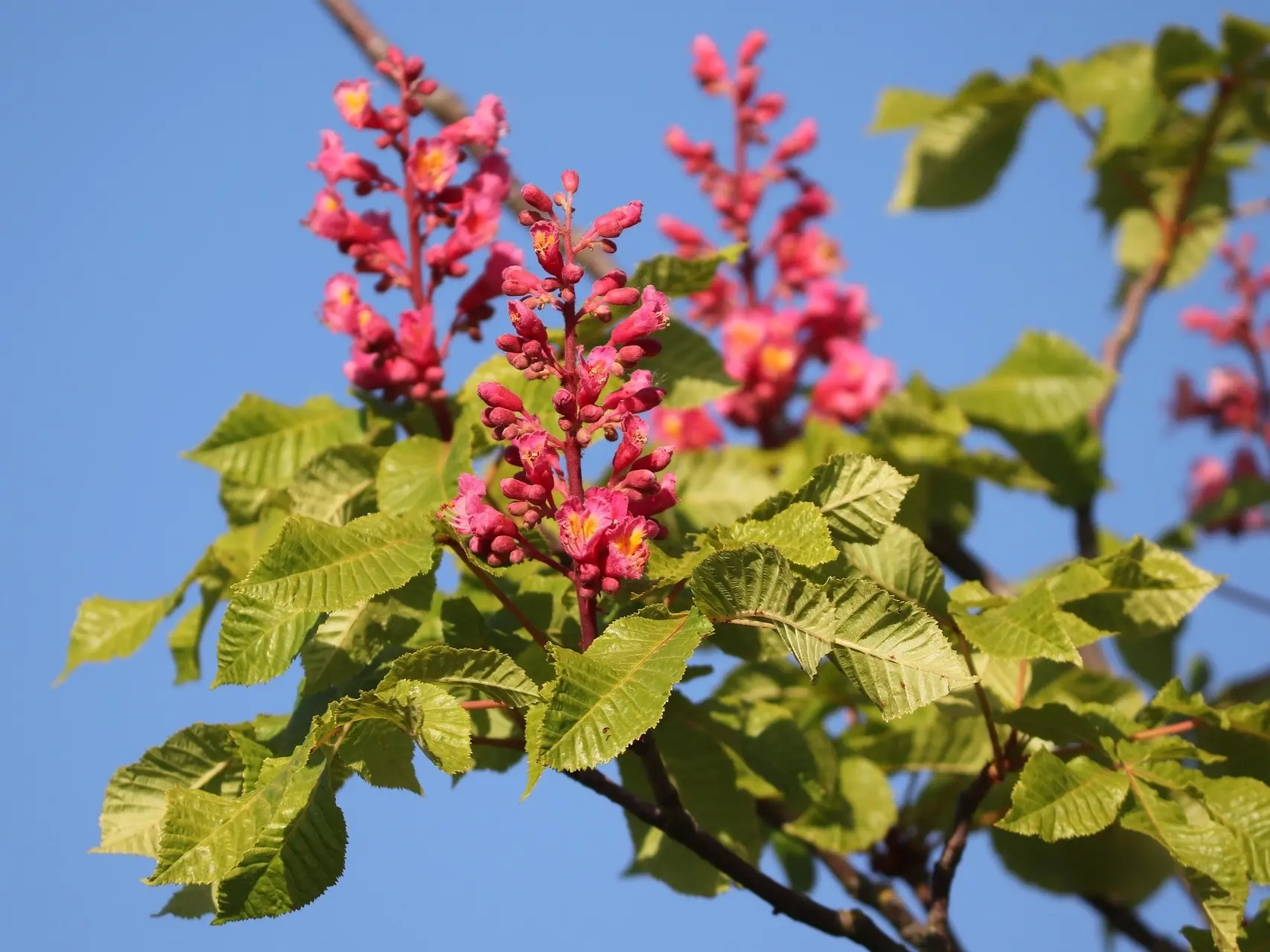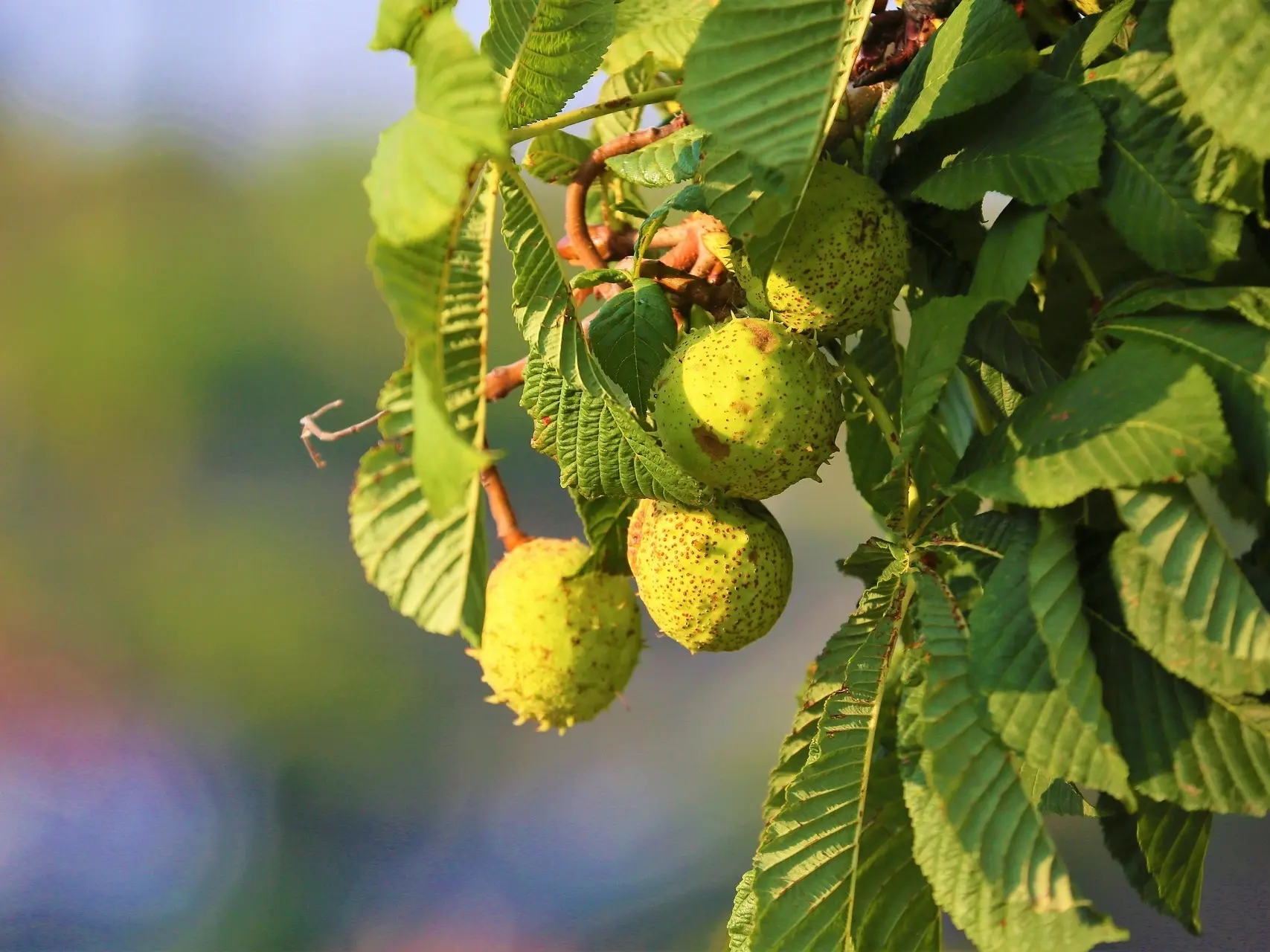
The start of every week is a great time to learn something new, like which plants your horse can’t eat. Today a close up of the incredibly common and always beautiful Buckeye Tree
A Little About Buckeye Trees
Aesculus hippocastanum is the Buckeye, also commonly called Horse Chestnuts. This plant can be a shrub, but is usually a tree with large leaves with leaflets, white, pink or yellow flowers grow clustered at branch ends & prickly fruit which contains a glossy brown seed.
How Dangerous Is It?
Not especially palatable, these trees wouldn’t be such a big concern if they weren’t so common. Their roots grow deep (& don’t rip up concrete) so they are often used to line streets, fields and parks. Horse Chestnuts contain toxins which can affect muscle control and motor coordination.
Nuts, seedlings, leaves, bark, sap & buds are toxic and can be fatal to equines.

What To Look For
You know your animal the best, so you should know when something is amiss. Buckeye toxicity symptoms can include diarrhea, dilated pupils, loss of coordination, colic, inflammation of mucus membranes and paralysis.
Learn More
Be sure to check out the Buckeye page to learn more about the plant and while you are at it why not check out more toxic plants?
*It should be noted that I’m not a veterinarian. This information is written specifically for horses and should be used for reference purposes only. If you think your horse has eaten something toxic call your vet right away.